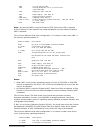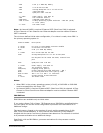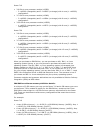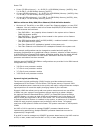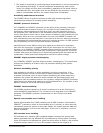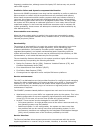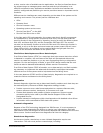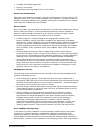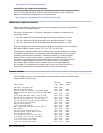
IBM Europe, Middle East, and Africa Hardware
Announcement ZG10-0214
IBM is a registered trademark of International Business Machines Corporation
13
• Fan speed is controlled by monitoring actual temperatures on critical components
and adjusting accordingly. If internal component temperatures reach critical
levels, the system will shut down immediately, regardless of fan speed. When a
redundant fan fails, the system calls out the failing fan and continues running.
When a nonredundant fan fails, the system shuts down immediately.
Availability enhancement functions
The POWER7 family of systems continues to offer and introduce significant
enhancements designed to increase system availability.
POWER7 processor functions
As in POWER6, the POWER7 processor has the ability to do processor instruction
retry and alternate processor recovery for a number of core-related faults. This
significantly reduces exposure to both hard (logic) and soft (transient) errors in
the processor core. Soft failures in the processor core are transient (intermittent)
errors, often due to cosmic rays or other sources of radiation, and generally are not
repeatable. When an error is encountered in the core, the POWER7 processor will
first automatically retry the instruction. If the source of the error was truly transient,
the instruction will succeed and the system will continue as before. On IBM systems
prior to POWER6, this error would have caused a checkstop.
Hard failures are more difficult, being true logical errors that will be replicated
each time the instruction is repeated. Retrying the instruction will not help in this
situation. As in POWER6, POWER7 processors have the ability to extract the failing
instruction from the faulty core and retry it elsewhere in the system for a number
of faults, after which the failing core is dynamically deconfigured and called out for
replacement. These systems are designed to avoid a full system outage.
POWER7 single processor checkstopping
As in POWER6, POWER7 provides single processor checkstopping. This significantly
reduces the probability of a fault in any one processor affecting total system
availability.
Partition availability priority
Also available is the ability to assign availability priorities to partitions. If an
alternate processor recovery event requires spare processor resources in order
to protect a workload, when no other means of obtaining the spare resources is
available, the system will determine which partition has the lowest priority and
attempt to claim the needed resource. On a properly configured POWER7 processor-
based server, this allows that capacity to be first obtained from, for example, a test
partition instead of a financial accounting system.
POWER7 cache availability
The POWER processor-based line of servers continues to be at the fore-front of
cache availability enhancements. The L3 cache is now integrated on the POWER7
processor. The POWER7 processor provides both L2 and L3 cache line delete
functions.
Special uncorrectable error handling
Special Uncorrectable Error (SUE) handling was an IBM innovation introduced for
POWER5
TM
processors, where an uncorrectable error in memory or cache does not
immediately cause the system to terminate. Rather, the system tags the data and
determines whether it will ever be used again. If the error is irrelevant, it will not
force a checkstop.
PCI extended error handling
PCI extended error handling (EEH)-enabled adapters respond to a special data
packet generated from the affected PCI slot hardware by calling system firmware,
which will examine the affected bus, allow the device driver to reset it, and continue
without a system reboot. For Linux, EEH support extends to the majority of



